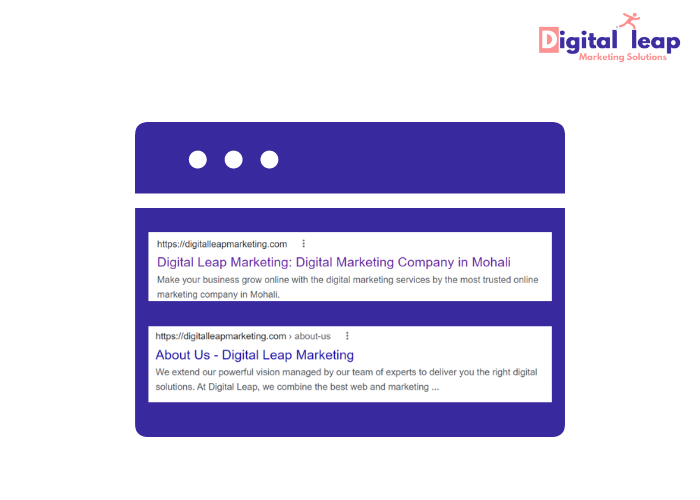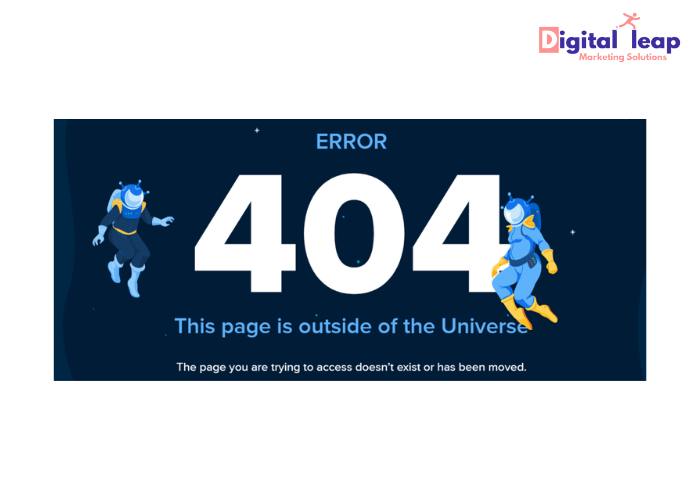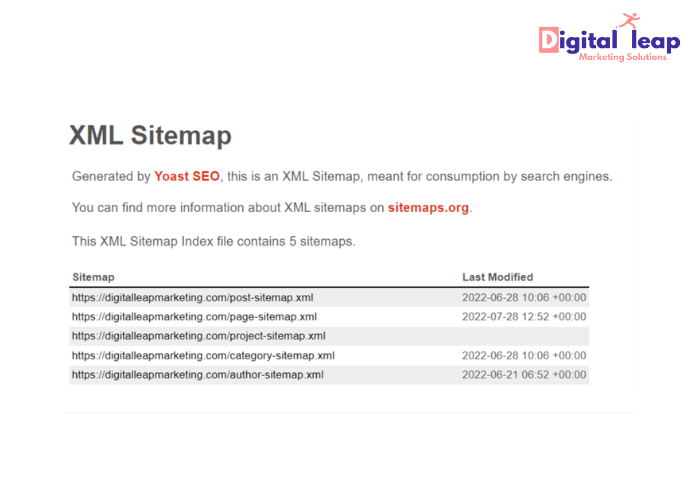Technical SEO, a technique that has gained extreme prominence in recent years; in simplified terms is a tactic that guides you to work on the technical foundation of your website.
This term has been known to strike fear amongst both SEO and non-SEO-focused marketers. Obviously, it is daunting; from the crawlability of the pages to their indexing, a lot goes into making your websites rank higher.
Understanding the technical aspects of your website is what technical SEO entails. Dozens of search strategies are involved for its successful implementation. Basically, it is all about creating websites that are easily crawlable, readable, and understandable by search engines.
So, a good technical SEO ensures that its three main elements- crawlability, performance and indexation are accurately done. For, you cannot rank high if you aren’t crawled and indexed well.
This means technical SEO is crucial for building a strong foundation for your SEO campaign. If it’s not properly implemented, Google and other search engines will have a hard time finding you and your business. So, you need a strong technical foundation to stay afloat.
In this blog, we will talk about the importance of technical SEO, why it is crucial for ranking, and what all considerations you need to make to bring your website into the limelight.
Simply follow our Technical SEO Guide below to understand the basics and how you can make maximum impact.
What is Technical SEO?
First things first, let’s get a fair idea of What is technical SEO?
Search engines have spiders that crawl through websites listed online and store information that is later indexed. This indexed information is then presented on search engines in an order depending upon its quality and relevance.
What technical SEO does is that it facilitates search engines to readily crawl, navigate, index, and retain the information on your website. To define– “Technical SEO refers to website and server optimizations that assist search engine web crawlers/ bots to index your site more effectively, thereby improving the organic ranking.”
Technical SEO forms one of the most important pillars of SEO since it allows search engines to discover, explore and read content on your website. Without a well-executed technical SEO technique, search engines will not be able to capture and identify your website as relevant as it is and thereby reducing your chances of showing up in a higher ranking.
Is Technical SEO complicated?
Although basics aren’t that difficult to understand, technical SEO can get a bit complex depending on various factors. So, to refine and perfect your technical SEO implementation, you will have to go beyond the basics and dive into technical SEO strategies that will make it easier for search engines to find and understand you.
The importance of technical SEO
Why is technical SEO important? How does it aid our website’s ranking? What if we don’t focus on it much? These are some of those questions that are frequently asked but don’t get definite answers to. Today, we will give you the answers for the same.
No doubt link building and other on-page optimizations create a bigger impact but the strength of your SEO campaign is measured by how technically sound it is. No matter how outstanding your content is or how many links you have made to your site, if it is technically weak, you won’t get results. And, this is what marks the importance of a technical SEO.
Every search engine aims to render to its users the most relevant and appropriate result for their query. This is why the search engines have a well-framed system of robots, also called spiders or web crawlers, which analyze and evaluate the websites based on a multitude of elements.
Some elements are user-focussed and evaluate websites on the basis of being user-friendly, while others are focused on what your page is about. The second element is where technical SEO comes in, as it enhances and modifies your website in a way that paves the way for search engines to crawl and understand your site. It plays an important role in your organic traffic.
Understanding Crawling, Indexing, and Ranking
In order to better understand technical SEO implementation, it’s imperative to learn how crawling and indexing take place on the web.

Crawling
Search engines send out their crawlers or spiders to grab content from the existing pages and use links on these pages to find more pages. In this way, they find content on the web and keep coming back and recrawl your pages to check what’s new.

Indexing
Once your website gets crawled, search engines will have to make it searchable. The index is a huge database of all the content that the search engines have organized for a quick response to queries. It gets regularly updated based on the changes made in a particular website like a new content post or if any page is deleted etc. There can be major changes in the search engine’s software also, depending on Google’s algorithm updates.

Ranking
When some search is performed, the index is scoured for highly relevant content with the aim of solving the searcher’s query. The order of the search results by relevance is termed ranking. So higher the ranking of the website, the more relevant it is.
Likewise, there are many other complex things associated with search engines. Once you understand these, you can put together your strategies accordingly to gain the best results.

Here’s how technical SEO aids your search results:
A technically optimized website is fast
Search engines consider the speed of a website as a crucial determinant for ranking. This is because research has indicated that users want their results to show up instantaneously, and around 53% of mobile website visitors will exit if loading is taking time.
Technical SEO is a key factor when it comes to improving the speed of your website. It structures the data on your website in a way that improves the performance of your site, getting you higher on the ranking.
Helps achieve better ranking
As mentioned before, technical SEO helps achieve better ranking by utilizing target search keywords and phrases and creating a crisp and clear website structure that allows search engines to index and display content efficiently, which eventually improves organic ranking, thereby driving traffic.
Improves search engine crawlability
Technical SEO helps you create a stunning internal linking structure for your website, which emphasize the authenticity and importance of content on your website. Since the web crawlers follow links to discover content on your site, the linking structure created using technical SEO will come as a huge advantage.
Elimination of duplicate content
When the web spiders run into the same or similar content on multiple sites, the search engines can penalize the website, diminishing its chances of a high ranking. Using technical SEO strategies, one can avoid the chances of duplication.
Helps locate website structure issues
Lastly, it helps furnish structured data and identify structural issues, which can then be fixed to bet optimization. Internal links are a factor that is considered in this. Internal links should not exceed more than three clicks deep within your site, if they are, you need to flatten your structure.
14 Best Practices of Technical SEO
Certain SEO practices qualify as being really effective. Carry out your own SEO audit by following the below-mentioned technical SEO checklist:

1. Specify a preferred domain
Websites are accessible either with www or without it, and when web crawlers come across this, they identify the two as different; therefore, it becomes necessary to specify a preferred domain that informs the search engines of the variation of the domain you want to use and avoid problems of indexing, duplicate content, and loss of ranking.

2. Optimize robots.txt
Robot.txt serves the function of guiding the web crawlers as to which content on your website should be crawled in and indexed. The root directory of your website is where this text file resides. The file usually has a well-framed format; however, you need to ensure there are no pseudo-blockings that will prevent the search engine crawlers from indexing your website.

3. Optimize the URL structure
The URLs are automatically created, however, technical SEO dictates that you must optimize the URL by using lower cases, shortening the length, using targeted keywords in the URL, avoiding unnecessary characters, and using separators like -.
4. 404 Page Optimization
404 error occurs in cases where the page is deleted, the URL was changed or it was mistyped. Make your 404-page SEO-friendly with the help of a plugin or editing to your theme templates.
A well-optimized 404 page has the same structure and navigation menus as your website, it uses friendly language to guide the visitors, suggests other related pages and makes it easier to go back to other important pages.

5. Navigation and website structure
Many webmasters overlook structuring their websites. The structure of the website, when further extended incorporates speed, mobile friendliness etc. When your website is user-friendly and allows users to find what they seek faster, the users tend to stay longer on the website, which also facilities the search engines to index your website and improve its ranking. So, the overall structure of the website matters, and it shouldn’t be overlooked.
6. Breadcrumb Menus
Breadcrumb menus allow users to navigate through the website. These are located at the top or bottom of the page, and users use them to switch between the homepage and the next page. These menus are highly recommended by Google and serve two main purposes-
- Allows easy navigation without the need to press the back button.
- Hints search engines about the structure of the website.
So, make sure breadcrumbs are enabled on your website with a proper schema.

7. Use Structured Data
This is another important SEO practice that’s slowly gaining prominence. It uses featured snippets, knowledge graph entries etc to enhance the presentation of your listings in the SERPs. Structured data can be in the form of articles, events, recipes, local businesses etc.
8. Keep Your Canonical URLs Under Check
Every page of your website should have a canonical URL, which indicates to Google the version of a page that should be considered when indexing your website.
9. Schema Markup
Building structured data in a language that gets your website identified by search engines. Its most recognized type is schema markup. It helps searchers with the most relevant results.

10. XML Site Map Optimization
One of the most important technical SEO elements, optimizing XML site map will help bots understand and crawl your webpages. It’s just like a map of your website.

11. Have an SSL Installed
Make your website HTTPS, which is an additional way to ensure the website is a trusted one. With an SSL installed on your server, your website will be accessed using https, which indicates information transfer between a website and a server is fully encrypted.

12. Tackling Website Speed
Another important factor for ranking is website speed. Faster websites perform better compared to slower ones. To make your website load faster, you can do the following:
· Switch to a 64-bit operating system
· Upgrade to PHP 7.2
· Optimize your image size
· Use less plugins
· Avoid using heavy and readymade themes
· Do not add too many scripts and so on

13. Consider a Mobile-friendly Website
Not having a mobile-friendly website can adversely affect your rankings. It’s an important part of technical SEO and must be properly configured.
14. Create AMP Pages for Your Website
Relatively a new concept, Accelerated Mobile Pages (AMP) leads to faster loading almost instantaneously and also increases your CTR (Click Through Rates) from mobile users.
Last but not least, Pagination and Multi-lingual websites are the other two technical SEO items that can help up your ranking game if executed in the right way.
Conclusion
By now you must have got a fair idea of how Technical SEO works and why it is important. In most cases, once you get your Technical SEO right, you won’t have to look back into it. All it would require will be periodic SEO audits. However, some technical knowledge will be required to perform some tasks in order to achieve your website’s full potential.
Technical SEO is not something that you can read through and master in just one go. You need to dive into the world of SEO, conduct dedicated research, and use trial and error to perfect it! Only then can you unlock the door to organic traffic.
Understand and implement these technical SEO tactics today and see your improved performance on Google Search.
If you’re looking for a reliable SEO agency, that could help you with Technical SEO, you can contact us for assistance. Digital Leap has been selected as one of the Top SEO Companies in India by DesignRush”.

